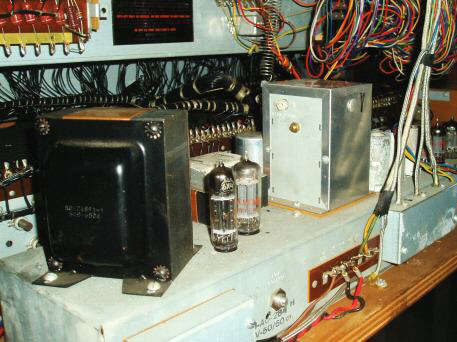Electron Engine ™
Printed Circuit Boards by Emissionlabs
Extra part. Some help with hum finding.
The good news is, most of the time, the EE boards will work right away. However, they inter act with a complex the environment, and sometime people configure the boards not right.
You can not measure hum easily, because you are in the millivolt range, which is below the resolution of many instruments. Adding or removing a ground connection here and there, to see if it helps, most of the time won't bring you any further. Better is, to make no mistakes from the beginning. In case of hum, look step by step, for the reason.
There are three main reasons for hum
- A ground loop
- Common mode signal
- Magnetic coupling from a mains transformers into the MC transformer.
1. A ground loop
We all heard about ground loops, but what is this actually? Physically it is always a loop, laying around around on the floor and on the equipment. It is combined of mains cable ground, and RCA cable ground. You already expect it, this is not a good combination. Such a loop you can also see as one transformer winding. If there is any 50Hz magnetic field radiating into this loop, a voltage will be created. Now, because the loop is shorted by itself, there is no measurable voltage. But the short causes current to flow through the shield of the RCA cables. This current will cause a small voltage in the cable shield. Which is another word for signal. There are more ways, a ground loop can cause hum. Better is, not having a ground loop, but there are many situations where they are inevitable.
2. Common mode signal
This is more difficult to explain. This is an issue with differential signals. Such as coming from a moving coil cartridge. Even when there is no music signal, the whole record player, including the cartridge, can be subject to 50 Hz signal, in the range of a few volts, or sometimes a lot more. We assume now of course, this doesn't matter for the receiving end, as it is a coil anyway, and it measures only the difference between it's connections. There is however also such a thing as primary to secondary capacitance. The common mode voltage is connected to this capacitor, and in that way generating a hum signal on the output. WIth high level signals, the capacitive current plays no role. WIth a Moving Coil application however, the music signal is very low, and the RIAA amplifier even amplifies this a lot. That is why we recommend RCA inputs for a moving coil transformer input.
3. Magnetic coupling
A mains transformer will radiate quite some 50Hz magnetic field. Through air, this can find its way into the MC core. Lundahl transformers are quite immune to this, but there are limits to everything. Like when placing a tone transformer near by the mains transformer, that is something you should not do. There is a way to find out, of the source of hum is a mains transformer. It works like this:
The Magnetic fields is always radiated in a certain direction. The core of the tone transformer just works the reverse way. That means, when it is in a 50Hz field, depending of its position, hum will be higher or lower. Even so, most of the time there is a dead position, That is an angle, under which the tone transformer will not pick up the field.
It is almost normal, that mains transformers radiate into sensitive transformers, but also into speaker output transformers. The solution lies into the right placement. If we talk about a low quality mains transformer, radiating heavily, it should not have been used in the first place. But such a transformer can also be present in some other equipment, also very expensive equipment, where this is no problem for the equipment itself. It can be a problem however for a sensitive tone transformer near by.
For the measurement, we need to remove the signal source from the EE20 board. If the hum is still present, we have a case of magnetic coupling. This requires no soldering, we can switch off the input signal, by opening the switches 4, 5, 6, 7, 8, 9, 10, 11, 12, while leaving 1, 2, 3 as they are. . (Write down the settings of all switches before you begin). If the hum still persists, we have a case of magnetic coupling. Move away the tone transformer from it's position, and / or rotate it, to see if this causes changes. If yes, you are too close to a mains transformer. A Moving Coil transformer unit, should have it's own place, with distance from mains transformers. It should not be placed on top of some other equipment with transformers inside.
A practical example, found in my Hammond A8 Organ from 1955.

The above picture shows the angled position of the mains transformer. Though this looks a bit 'old radio stuff', in fact this is a very intelligent construction, and a well made transformer, with a copper outside shield, under the iron caps. (See the copper piece above, sticking out). This is like one big copper winding, which is shorted, and it picks up and destroys the external radiation field.
I took out the transformer mounting screws, to rotate the transformer. This confirmed what I expected, the transformer is placed at the position, with lowest magnetic pick up by the tone generator. (which is full of tone coils).
Also is visible, the mains transformer and output transformer (behind the two tubes) are mounted on another axis. The core of the mains transformer is mounted vertical, the output transformer is mounted horizontal, which makes interference even lower.